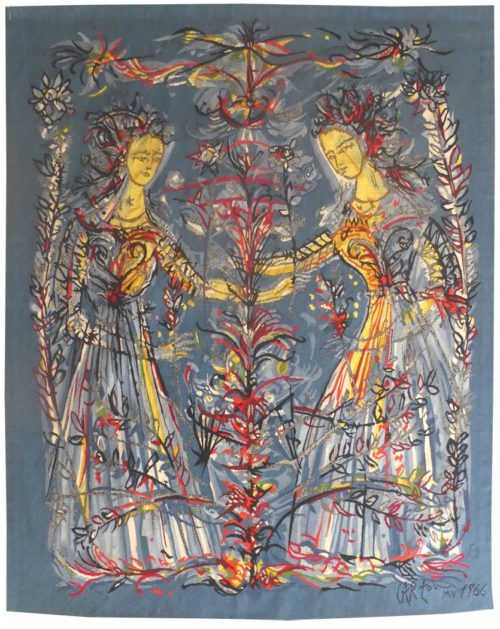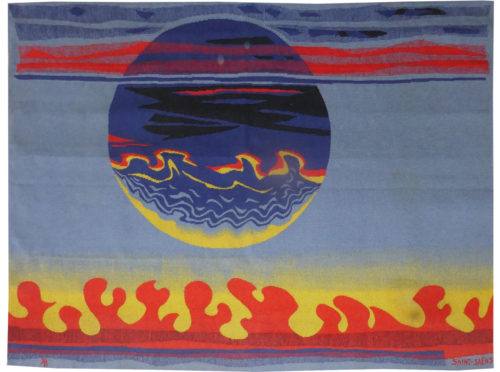Les Jumelles (the twins)
Tapestry woven in the Moulin de Vauboyen workshop.
With signed label, n°3/8.
1966.
Carzou is one of a number of artists whose work was woven at Bièvres at the Moulin de Vauboyen (hence the mark MV woven into the tapestries), which was transformed by Pierre de Tartas into an arts centre in 1959 and devoted to figurative art. Many noteworthy names would pass through including Cocteau, Foujita, Erni, Volti ... among others, who would produce much work, often monumental, as well as realisations in the applied arts (notably book illustrations)
Carzou was most noted at the start of his career as a decorative painter (notably for the theatre), and his work for tapestry is relatively rare. His style is immediately recognisable in this cartoon, the busy hatching illustrating dream-like subjects, not unlike work produced by Lucien Coutaud.



